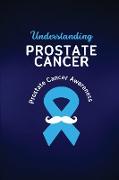- Start
- Understanding Prostate Cancer
Understanding Prostate Cancer
Angebote / Angebote:
Prostate cancer is the second most common diagnosed cancer and the third most
common cause of death related to cancer among men in developed countries. Several
epidemiological studies, prospective cohort studies and animal tumour models state an
inverse relationship between selenium status and cancer incidence. Semethylselenocysteine
(SeMSC), present in garlic, onions, leeks and broccoli, has been
shown to be the most effective anti-carcinogenic selenium form in animal models. The aim
of the work presented in this thesis was to investigate the influence of selenium
compounds (Se-methylselenocysteine and selenomethionine) on prostate cancer
progression and metastasis using various human cell lines (LNCaP, DU145 and PC3).
Standard 2D gel and SILAC (stable isotope labelling with amino acids in cell culture)
proteomics were used, in combination with mass spectrometry, to identify seleniumresponsive
proteins. Resulting proteins were clustered and modelled around the prostate
cancer signalling pathway. IMPDH2, GPI, EZR and RGS10 were validated by western blot,
while PDIA3 and DDX5 showed a selenium response under serum depleted conditions.
Some proteins require more scrutinizing (galectin-1, XRCC5, TAGLN2, DDX5 and FLT) as
conflicting results were obtained during validation. Preliminary analysis using 2D gel
proteomics revealed galectin-1 to be selenium-responsive in PNT1A cells, although this
could not be confirmed by Western blot or an in-house ELISA. Previously, it has been
shown that SeMSC decreased the expression of collagen I and increased that of collagen
IV and collagen VI. A LNCaP 3D gel suspension model was developed to allow further
investigation of extracellular matrix components using fluorescence microscopy. In
addition, the effect of selenium exposure on the migration and invasion of PC3 cells was
investigated using a transwell kinetic assay and revealed a dose response increase,
especially under low baseline selenium concentrations. In order to optimize future
selenium in vitro projects the dynamics of several selenium biomarkers were investigated
using different conditions, enabling better comparison between cell lines and/or selenium
compounds.
Folgt in ca. 10 Arbeitstagen
